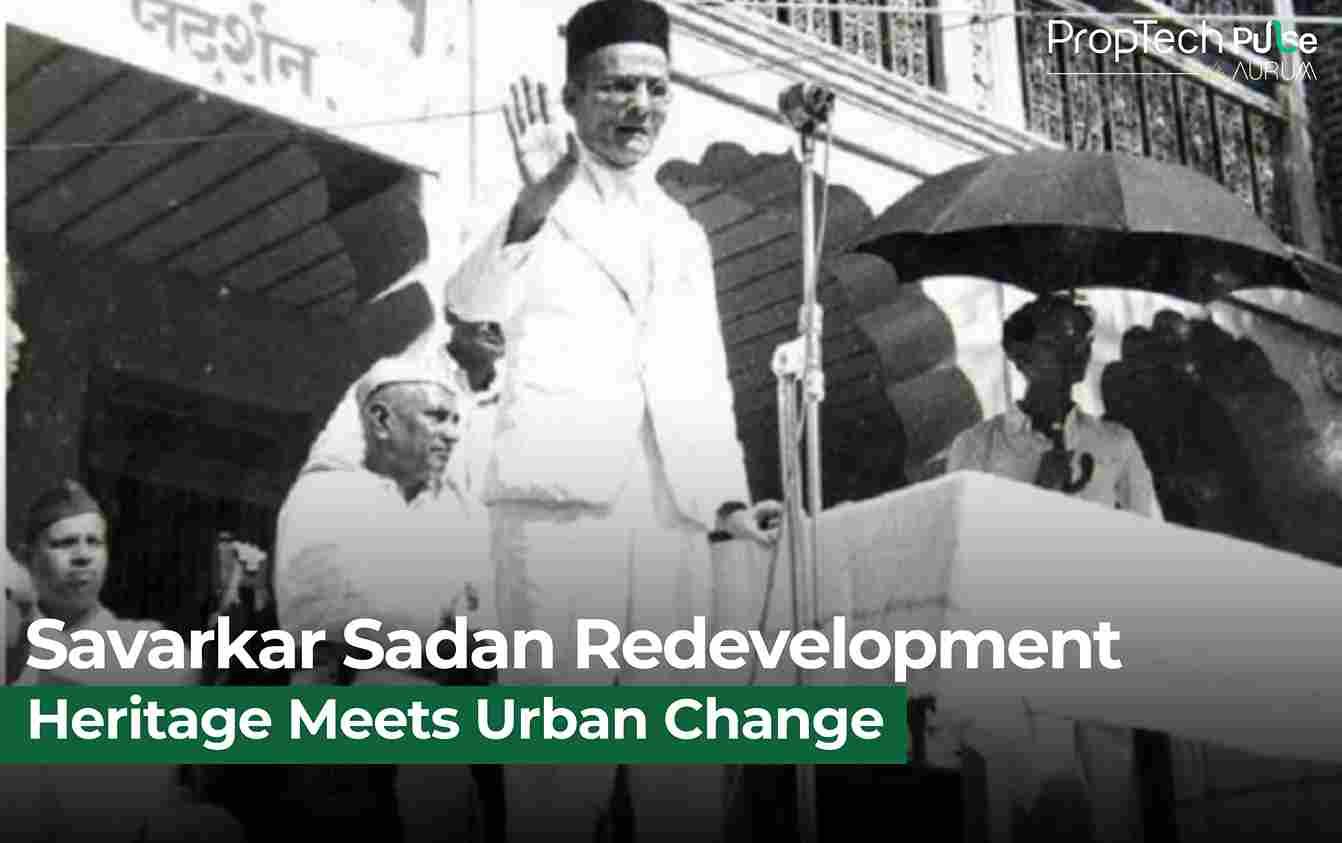
Nestled in the historic Shivaji Park area of Mumbai, Savarkar Sadan stands as a silent witness to India’s tumultuous freedom struggle and the life of one of its most influential ideologues, Vinayak Damodar Savarkar.
Built in 1938, this bungalow was not just a residence but a hub of political activity and strategic discussions that shaped the course of Indian history. Today, however, the building faces an uncertain future as redevelopment plans gain momentum, sparking a complex debate between heritage preservation and urban modernization.
A Residence Steeped in History
Vinayak Damodar Savarkar, popularly known as Veer Savarkar, lived in this very house until his death in 1966. The bungalow has witnessed several significant historical events, including meetings with prominent leaders like Subhas Chandra Bose in 1940, and later, with Nathuram GodseNarayan Apte in 1948. It is not merely a structure but a repository of memories and moments that hold immense national importance.
The Swatantryaveer Savarkar Rashtriya Smarak Trust currently owns a small part of the building-a single room on the ground floor-which functions as a modest museum dedicated to Savarkar’s life and legacy. This museum preserves artifacts, documents, and memorabilia that tell the story of a man whose ideas and actions continue to influence Indian politics and society.
The State of Savarkar Sadan Today
Despite its historical significance, Savarkar Sadan’s physical condition has deteriorated over the years. While the exterior was recently repainted, residents and observers alike point out that the building’s interior is showing signs of serious wear and tear, including water seepage and structural damage. The aging infrastructure raises concerns about safety and usability, prompting many of the building’s residents to consider redevelopment as a practical solution.
Sources close to the building reveal that most owners have either signed or are in the process of signing agreements with a private developer interested in redeveloping the property. However, no formal redevelopment proposal has yet been submitted to the authorities. The trust, meanwhile, is exploring the possibility of expanding its museum space on the mezzanine floor of any new structure and is keen to retain the name “Savarkar Sadan” to preserve the building’s historical identity.
The Complex Web of Ownership and Consent
The ownership of Savarkar Sadan is fragmented. While the trust owns a small portion, the majority of the building belongs to private residents and descendants of original owners. This fragmentation complicates the redevelopment process, as municipal regulations require the consent of at least 51 percent of owners to approve any redevelopment plan.
According to insiders, nearly all co-owners except the trust have expressed willingness to move forward with redevelopment. This consensus among residents highlights the practical challenges of maintaining an old structure in a prime urban location like Shivaji Park, where land prices are soaring and demand for modern housing is high.
Heritage Concerns and Legal Efforts
The prospect of redevelopment has ignited a passionate debate among heritage activists, historians, and Savarkar’s admirers. Many argue that Savarkar Sadan is not just a private property but a monument of national importance that deserves protection and preservation. They contend that redevelopment could erase a vital piece of India’s historical fabric.
Efforts to protect the building have been ongoing for years. A Public Interest Litigation was filed in 2008 seeking to prevent redevelopment and secure heritage status for the bungalow. The Mumbai Heritage Conservation Committee recommended that Savarkar Sadan be classified as a Grade II A heritage structure in 2009, which would offer it significant protection under city laws. However, the final decision on granting heritage status rests with the Maharashtra state government, which has yet to take conclusive action.
The trust and heritage advocates continue to press for official recognition to safeguard the building’s legacy. They emphasize that redevelopment should be sensitive to the site’s historical significance, suggesting adaptive reuse models that integrate preservation with modernization.
Potential for a Larger Redevelopment Project
Beyond Savarkar Sadan itself, sources indicate that two neighboring plots-including Laxmi Sadan and a parcel facing Shivaji Park-may be incorporated into any future redevelopment plan. This expanded scope could transform the entire corner into a modern residential or mixed-use complex, dramatically altering the character of the neighborhood.
Such a development would bring modern amenities and infrastructure to the area but also raises questions about the impact on the cultural landscape of Shivaji Park, a locality known for its historical and political significance.
Perspectives from the Trust and Residents
Manjiri Marathe, an official from the Swatantryaveer Savarkar Rashtriya Smarak Trust, confirmed that while some residents are actively engaged in talks with developers, the trust itself has not received any official redevelopment proposals. She noted that discussions took place during the trust’s annual general meeting in December 2024, where the possibility of redevelopment was deliberated, and a formal proposal was requested from the builder.
The trust remains committed to preserving Savarkar’s legacy and is keen on ensuring that any redevelopment plan includes provisions for the museum and retains the historic name. This stance reflects a desire to balance progress with respect for heritage.
The Road Ahead: Navigating Heritage and Development
The future of Savarkar Sadan encapsulates a broader challenge faced by many Indian cities: how to reconcile rapid urban growth with the preservation of historical landmarks. Mumbai, with its dense population and soaring real estate prices, often sees heritage structures give way to redevelopment projects. Yet, the cultural and emotional value of such sites cannot be overlooked.
As the redevelopment talks continue, stakeholders from all sides must engage in meaningful dialogue to find a solution that honors the past while embracing the future. Whether through heritage conservation, adaptive reuse, or sensitive redevelopment, the goal should be to keep Savarkar’s memory alive in a city that is constantly evolving.
Unlock the Latest in Real Estate
News, Infographics, Blogs & More! Delivered to your inbox.
“Data that drives action. Insight that inspires action. Technology that empowers action.“
“Data that drives action.
Insight that inspires action.
Technology that empowers action.“









